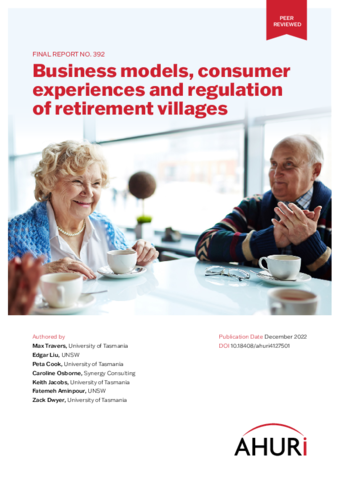This research looks at the appeal, benefits and disadvantages of living in retirement villages, as well as at the business models employed and how the Australian Government can help the sector to expand.
Retirement villages are a fast-growing housing sector: in 2014 approximately 184,000 Australians lived in retirement villages, equivalent to 5.7 per cent of the population aged 65 and over, a rate projected to increase to 7.5 per cent by 2025. Living in retirement villages saves the health care system $2.16 billion, with $1.98 billion of those savings achieved by postponing residents’ entry into government funded aged care facilities; however the sector does not currently receive direct funding from Commonwealth or state and territory governments.
Retirement villages are governed by state and territory legislation in Australia, with each jurisdiction enacting its own set of regulations. A state tribunal in each jurisdiction provides independent, low cost and accessible dispute resolution in consumer or tenancy disputes.
The major providers active in the retirement village industry are for-profit companies who market their product as a ‘lifestyle choice’ to entice wealthy Australians to purchase accommodation. There is little prospect that small not-for-profit organisations will expand their retirement provision without significant government funding (in the form of tax breaks, subsidies etc.).
This research makes a number of recommendations, including a national ombudsman to support and advocate for the rights of older people navigating disputes with retirement village operators; greater transparency into fees and ongoing charges for retirement village residents; and building standards that ensure retirement village operators are responsible for providing accessible, universally designed residences and facilities.


